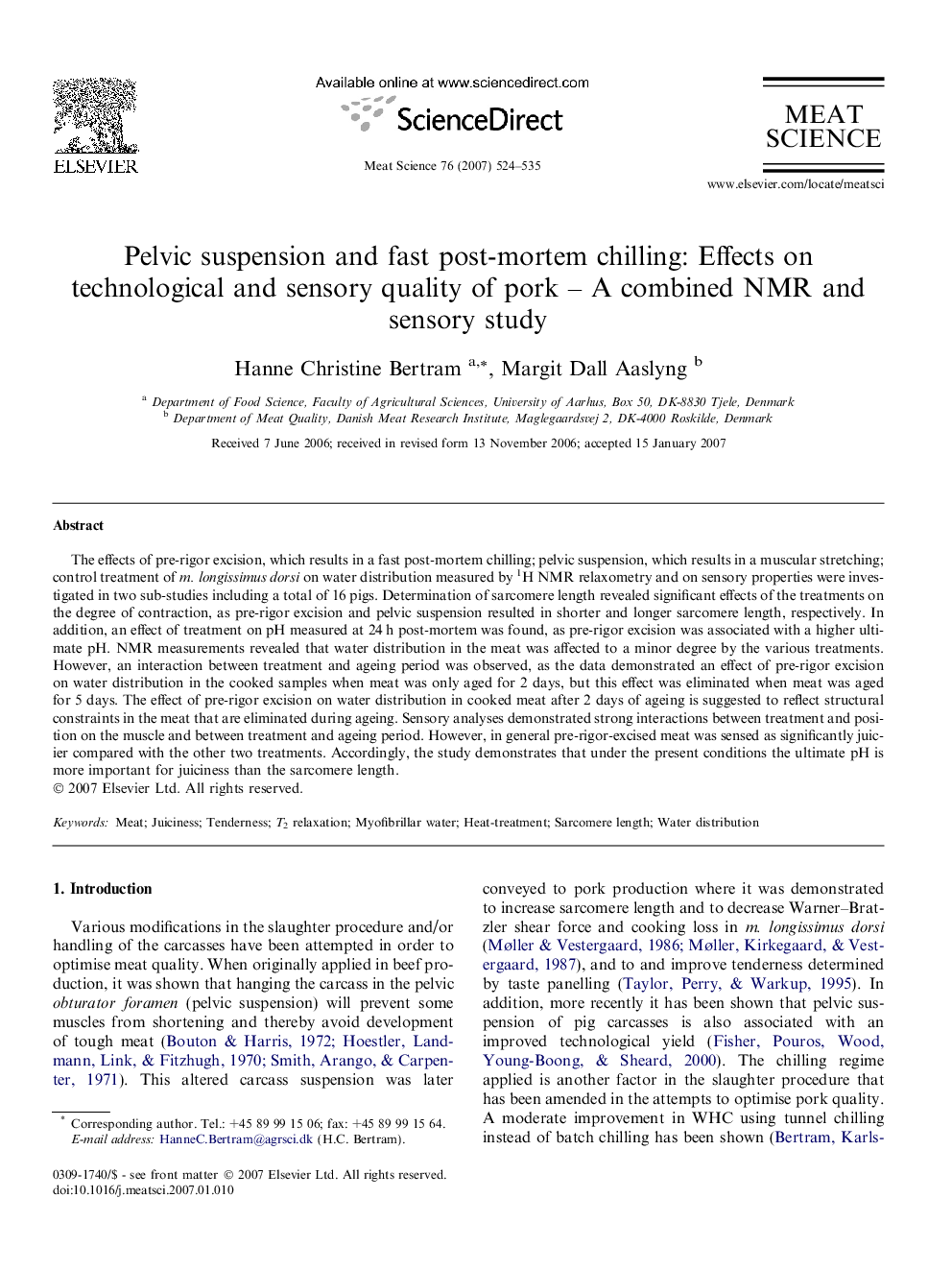| Article ID | Journal | Published Year | Pages | File Type |
|---|---|---|---|---|
| 2452024 | Meat Science | 2007 | 12 Pages |
The effects of pre-rigor excision, which results in a fast post-mortem chilling; pelvic suspension, which results in a muscular stretching; control treatment of m. longissimus dorsi on water distribution measured by 1H NMR relaxometry and on sensory properties were investigated in two sub-studies including a total of 16 pigs. Determination of sarcomere length revealed significant effects of the treatments on the degree of contraction, as pre-rigor excision and pelvic suspension resulted in shorter and longer sarcomere length, respectively. In addition, an effect of treatment on pH measured at 24 h post-mortem was found, as pre-rigor excision was associated with a higher ultimate pH. NMR measurements revealed that water distribution in the meat was affected to a minor degree by the various treatments. However, an interaction between treatment and ageing period was observed, as the data demonstrated an effect of pre-rigor excision on water distribution in the cooked samples when meat was only aged for 2 days, but this effect was eliminated when meat was aged for 5 days. The effect of pre-rigor excision on water distribution in cooked meat after 2 days of ageing is suggested to reflect structural constraints in the meat that are eliminated during ageing. Sensory analyses demonstrated strong interactions between treatment and position on the muscle and between treatment and ageing period. However, in general pre-rigor-excised meat was sensed as significantly juicier compared with the other two treatments. Accordingly, the study demonstrates that under the present conditions the ultimate pH is more important for juiciness than the sarcomere length.
